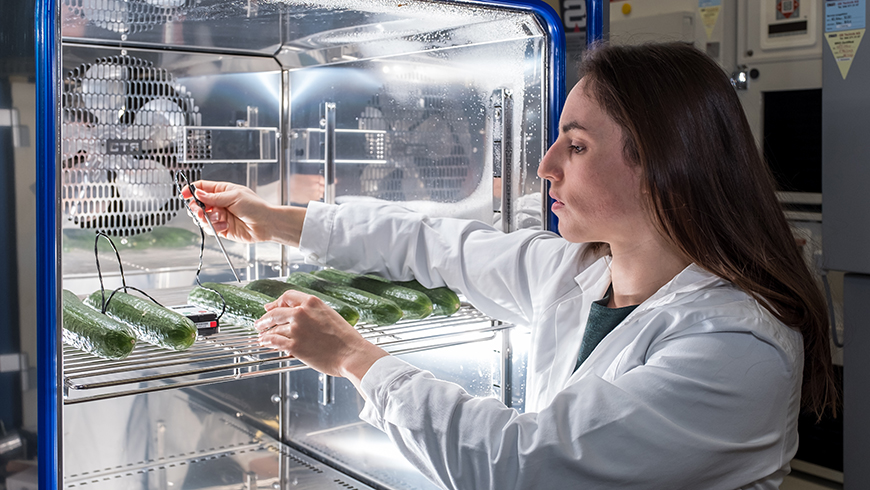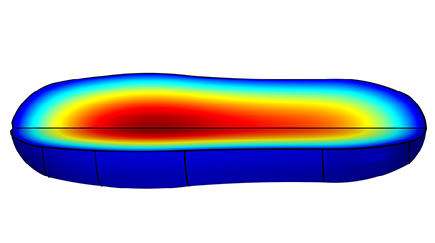Together againt foodwaste
Cucumber with twin
Vegetables and fruits often have a long way to go on the supermarket shelf. How can quality be intelligently maintained on long journeys and possible spoilage prevented? In cooperation with Coop, Empa experts are developing a system that keeps an eye on freshness during transport - and at the same time allows optimization.

How is a cucumber doing after two days of trucking from Spain to Switzerland? "Asking them would not yield a revealing answer," says Thijs Defraeye with a twinkle in his eye. That's why the scientist and his team at Empa rely on a different method. At the heart of the system is a sensor that accompanies the cucumbers, measures temperature and humidity in the transport vehicle until they arrive at the store or are temporarily stored, and transmits the data to Empa. After all, these factors have to be right for fruit and vegetables to arrive at the store in good condition. The data obtained can be used to determine whether the ideal values have been met. "From this, we can in turn draw conclusions about the quality of the produce," says Defraeye. And, "We can see where improvements are needed."
The goal of the project, which Empa is carrying out together with Coop, is to reduce food waste: when food is transported under unfavorable conditions, it reduces its shelf life. In addition to cucumbers, the researchers are also taking a close look at eggplants and strawberries and raspberries. Berries are particularly sensitive and therefore depend on optimal conditions.

Now, measuring temperature and humidity is not too big a deal in itself. "However, a simple temperature curve would not give us enough information," explains Defraeye. The researchers also need information on how any change in transport conditions affects the fruit. To do this, they have developed computer models of the fruits and vegetables specifically for this purpose. These digital twins contain a complete set of information about quality parameters of the product in question - for example, how many days a cucumber can be stored at what temperature. The model is fed with the data from the sensors and calculates the deviations from the ideal value. In this way, the scientists learn not only what happened where and when, but also how serious these occurrences are.
Measures can be taken on the basis of the information obtained. "We want to optimize wherever possible," says Andreas Allenspach, responsible for fruits and vegetables at Coop. "If the data analysis shows, for example, that the conditions at a transporter were increasingly not right, we seek discussion with him and strive for improvements together." There is also an exchange with the farmers. Careful handling of the produce during harvesting and subsequent storage are the basis for ensuring that the products reach the customer in good quality. "Farm to fork" is the name of this principle.
In the future, the evaluated sensor data will also help with the management of the produce. For example, fruits and vegetables that have lost their shelf life partially due to suboptimal transport conditions can be put on sale more quickly. Or the distribution center delivers them to a store closer to home to avoid another lengthy transport.
Such commitment is exemplary, says Thijs Defraeye: "The Coop managers asked us for support with problems in the supply chain. That is rather rare." The standards in the cold chain area are already high, he says, "but Coop continues to look for potential for improvement and wants sustainable solutions when it comes to implementation." Coop officials are also pleased with the collaboration. "It is constructive, forward-looking and based on partnership," says Andreas Allenspach.
Supplemented online version; original article published in Coopzeitung No. 03/2021
Prof. Dr. Thijs Defraeye
Biomimetic Membranes and Textiles
Phone +41 58 765 47 90
Coop Genossenschaft
Media office
Phone +41 61 336 70 00
Norbert Raabe
Empa, Communication
Phone +41 58 765 44 54
redaktion@empa.ch





